Methacrylate-Based Polymeric Sorbents for Recovery of Metals from Aqueous Solutions
Abstract
:1. Introduction
2. Methodology
3. Natural Polymers, Inorganic Materials, and Polymer/Inorganic Composite as Metal Ions Sorbents
4. Polymeric Sorbents
5. Adsorption of Metal Ions on Polymeric Sorbents—General Remarks
5.1. Adsorption Isotherms Models
5.2. Adsorption Kinetics
5.3. Adsorption Thermodynamics
5.4. Desorption of Metals and Reusability of Polymeric Sorbents
6. Methacrylate-Based Sorbents
7. Adsorption on Amino-Functionalized Glycidyl Methacrylate-Based Polymers
8. Adsorption on Magnetic Polymeric Sorbents
9. Overview of Characterization Methods
9.1. Fourier Transform Infrared Spectroscopy (FTIR)
9.2. X-ray Photoelectron Spectroscopy (XPS)
9.3. SEM/EDS and TEM
9.4. Porosity Determination
10. Conclusions
Author Contributions
Funding
Institutional Review Board Statement
Informed Consent Statement
Data Availability Statement
Conflicts of Interest
References
- Liosis, C.; Papadopoulou, A.; Karvelas, E.; Karakasidis, T.E.; Sarris, I.E. Heavy Metal Adsorption Using Magnetic Nanoparticles for Water Purification: A Critical Review. Materials 2021, 14, 7500. [Google Scholar] [CrossRef] [PubMed]
- Kazmierczak-Razna, J.; Zioła-Frankowska, A.; Nowicki, P.; Frankowski, M.; Wolski, R.; Pietrzak, R. Removal of Heavy Metal Ions from One- and Two-Component Solutions via Adsorption on N-Doped Activated Carbon. Materials 2021, 14, 7045. [Google Scholar] [CrossRef] [PubMed]
- Lakherwal, D. Adsorption of Heavy Metals: A Review. Int. J. Environ. Res. Dev. 2014, 4, 41–48. [Google Scholar]
- Fu, F.; Wang, Q. Removal of Heavy Metal Ions from Wastewaters: A Review. J. Environ. Manag. 2011, 92, 407–418. [Google Scholar] [CrossRef] [PubMed]
- Tofan, L.; Wenkert, R. Chelating Polymers with Valuable Sorption Potential for Development of Precious Metal Recycling Technologies. Rev. Chem. Eng. 2022, 38, 167–183. [Google Scholar] [CrossRef]
- Hu, Y.; Florek, J.; Larivière, D.; Fontaine, F.-G.; Kleitz, F. Recent Advances in the Separation of Rare Earth Elements Using Mesoporous Hybrid Materials. Chem. Rec. 2018, 18, 1261–1276. [Google Scholar] [CrossRef] [PubMed]
- Xu, J.; Cao, Z.; Zhang, Y.; Yuan, Z.; Lou, Z.; Xu, X.; Wang, X. A Review of Functionalized Carbon Nanotubes and Graphene for Heavy Metal Adsorption from Water: Preparation, Application, and Mechanism. Chemosphere 2018, 195, 351–364. [Google Scholar] [CrossRef]
- Ince, M.; Kaplan İnce, O. An Overview of Adsorption Technique for Heavy Metal Removal from Water/Wastewater: A Critical Review. Int. J. Pure Appl. Sci. 2017, 3, 10–19. [Google Scholar] [CrossRef] [Green Version]
- Fei, Y.; Hu, Y.H. Design, Synthesis, and Performance of Adsorbents for Heavy Metal Removal from Wastewater: A Review. J. Mater. Chem. A 2022, 10, 1047–1085. [Google Scholar] [CrossRef]
- Burakov, A.E.; Galunin, E.V.; Burakova, I.V.; Kucherova, A.E.; Agarwal, S.; Tkachev, A.G.; Gupta, V.K. Adsorption of Heavy Metals on Conventional and Nanostructured Materials for Wastewater Treatment Purposes: A Review. Ecotoxicol. Environ. Saf. 2018, 148, 702–712. [Google Scholar] [CrossRef]
- Carlos, L.; Garcia Einschlag, F.S.; González, M.C.; Mártire, D.O. Applications of Magnetite Nanoparticles for Heavy Metal Removal from Wastewater. In Waste Water—Treatment Technologies and Recent Analytical Developments; Garca Einschlag, F.S., Ed.; InTech: London, UK, 2013; pp. 63–77. [Google Scholar]
- Sud, D.; Mahajan, G.; Kaur, M. Agricultural Waste Material as Potential Adsorbent for Sequestering Heavy Metal Ions from Aqueous Solutions—A Review. Bioresour. Technol. 2008, 99, 6017–6027. [Google Scholar] [CrossRef] [PubMed]
- Meseldzija, S.; Petrovic, J.; Onjia, A.; Volkov-Husovic, T.; Nesic, A.; Vukelic, N. Utilization of Agro-Industrial Waste for Removal of Copper Ions from Aqueous Solutions and Mining-Wastewater. J. Ind. Eng. Chem. 2019, 75, 246–252. [Google Scholar] [CrossRef]
- Gómez Aguilar, D.L.; Rodríguez Miranda, J.P.; Astudillo Miller, M.X.; Maldonado Astudillo, R.I.; Esteban Muñoz, J.A. Removal of Zn(II) in Synthetic Wastewater Using Agricultural Wastes. Metals 2020, 10, 1465. [Google Scholar] [CrossRef]
- Dzhardimalieva, G.I.; Uflyand, I.E. Synthetic Methodologies for Chelating Polymer Ligands: Recent Advances and Future Development. ChemistrySelect 2018, 3, 13234–13270. [Google Scholar] [CrossRef]
- Radovanović, F.; Nastasović, A.; Tomković, T.; Vasiljević-Radović, D.; Nešić, A.; Veličković, S.; Onjia, A. Novel Membrane Adsorbers Incorporating Functionalized Polyglycidyl Methacrylate. React. Funct. Polym. 2014, 77, 1–10. [Google Scholar] [CrossRef] [Green Version]
- Stajčić, A.; Nastasović, A.; Stajić-Trošić, J.; Marković, J.; Onjia, A.; Radovanović, F. Novel Membrane-Supported Hydrogel for Removal of Heavy Metals. J. Environ. Chem. Eng. 2015, 3, 453–461. [Google Scholar] [CrossRef]
- Zheng, C.; He, C.; Yang, Y.; Fujita, T.; Wang, G.; Yang, W. Characterization of Waste Amidoxime Chelating Resin and Its Reutilization Performance in Adsorption of Pb(II), Cu(II), Cd(II) and Zn(II) Ions. Metals 2022, 12, 149. [Google Scholar] [CrossRef]
- Samiey, B.; Cheng, C.-H.; Wu, J. Organic-Inorganic Hybrid Polymers as Adsorbents for Removal of Heavy Metal Ions from Solutions: A Review. Materials 2014, 7, 673–726. [Google Scholar] [CrossRef] [Green Version]
- Dutta, K.; De, S. Aromatic Conjugated Polymers for Removal of Heavy Metal Ions from Wastewater: A Short Review. Environ. Sci. Water Res. Technol. 2017, 3, 793–805. [Google Scholar] [CrossRef]
- Marjanovic, V.; Peric-Grujic, A.; Ristic, M.; Marinkovic, A.; Markovic, R.; Onjia, A.; Sljivic-Ivanovic, M. Selenate Adsorption from Water Using the Hydrous Iron Oxide-Impregnated Hybrid Polymer. Metals 2020, 10, 1630. [Google Scholar] [CrossRef]
- Alcaraz, L.; Saquinga, D.N.; López, F.; Lima, L.D.; Alguacil, F.J.; Escudero, E.; López, F.A. Application of a Low-Cost Cellulose-Based Bioadsorbent for the Effective Recovery of Terbium Ions from Aqueous Solutions. Metals 2020, 10, 1641. [Google Scholar] [CrossRef]
- Verma, M.; Lee, I.; Hong, Y.; Kumar, V.; Kim, H. Multifunctional β-Cyclodextrin-EDTA-Chitosan Polymer Adsorbent Synthesis for Simultaneous Removal of Heavy Metals and Organic Dyes from Wastewater. Environ. Pollut. 2022, 292, 118447. [Google Scholar] [CrossRef] [PubMed]
- Haripriyan, U.; Gopinath, K.P.; Arun, J. Chitosan Based Nano Adsorbents and Its Types for Heavy Metal Removal: A Mini Review. Mater. Lett. 2022, 312, 131670. [Google Scholar] [CrossRef]
- Shehzad, H.; Ahmed, E.; Sharif, A.; Farooqi, Z.H.; Din, M.I.; Begum, R.; Liu, Z.; Zhou, L.; Ouyang, J.; Irfan, A.; et al. Modified Alginate-Chitosan-TiO2 Composites for Adsorptive Removal of Ni(II) Ions from Aqueous Medium. Int. J. Biol. Macromol. 2022, 194, 117–127. [Google Scholar] [CrossRef] [PubMed]
- Shehzad, H.; Farooqi, Z.H.; Ahmed, E.; Sharif, A.; Razzaq, S.; Mirza, F.N.; Irfan, A.; Begum, R. Synthesis of Hybrid Biosorbent Based on 1,2-Cyclohexylenedinitrilotetraacetic Acid Modified Crosslinked Chitosan and Organo-Functionalized Calcium Alginate for Adsorptive Removal of Cu(II). Int. J. Biol. Macromol. 2022, 209, 132–143. [Google Scholar] [CrossRef]
- Castro, L.; Ayala, L.A.; Vardanyan, A.; Zhang, R.; Muñoz, J.Á. Arsenate and Arsenite Sorption Using Biogenic Iron Compounds: Treatment of Real Polluted Waters in Batch and Continuous Systems. Metals 2021, 11, 1608. [Google Scholar] [CrossRef]
- Perumal, S.; Atchudan, R.; Edison, T.N.J.I.; Babu, R.S.; Karpagavinayagam, P.; Vedhi, C. A Short Review on Recent Advances of Hydrogel-Based Adsorbents for Heavy Metal Ions. Metals 2021, 11, 864. [Google Scholar] [CrossRef]
- Antić, K.M.; Babić, M.M.; Vuković, J.J.J.; Vasiljević-Radović, D.G.; Onjia, A.E.; Filipović, J.M.; Tomić, S.L. Preparation and Characterization of Novel P(HEA/IA) Hydrogels for Cd2+ Ion Removal from Aqueous Solution. Appl. Surf. Sci. 2015, 338, 178–189. [Google Scholar] [CrossRef] [Green Version]
- Naseem, K.; Farooqi, Z.H.; Begum, R.; Ur Rehman, M.Z.; Ghufran, M.; Wu, W.; Najeeb, J.; Irfan, A. Synthesis and Characterization of Poly(N-Isopropylmethacrylamide-Acrylic Acid) Smart Polymer Microgels for Adsorptive Extraction of Copper(II) and Cobalt(II) from Aqueous Medium: Kinetic and Thermodynamic Aspects. Environ. Sci. Pollut. Res. 2020, 27, 28169–28182. [Google Scholar] [CrossRef]
- Shahid, M.; Farooqi, Z.H.; Begum, R.; Arif, M.; Irfan, A.; Azam, M. Extraction of Cobalt Ions from Aqueous Solution by Microgels for In-Situ Fabrication of Cobalt Nanoparticles to Degrade Toxic Dyes: A Two Fold-Environmental Application. Chem. Phys. Lett. 2020, 754, 137645. [Google Scholar] [CrossRef]
- Ariffin, N.; Abdullah, M.M.A.B.; Mohd Arif Zainol, M.R.R.; Murshed, M.F.; Hariz-Zain; Faris, M.A.; Bayuaji, R. Review on Adsorption of Heavy Metal in Wastewater by Using Geopolymer. MATEC Web Conf. 2017, 97, 01023. [Google Scholar] [CrossRef]
- Siyal, A.A.; Shamsuddin, M.R.; Khan, M.I.; Rabat, N.E.; Zulfiqar, M.; Man, Z.; Siame, J.; Azizli, K.A. A Review on Geopolymers as Emerging Materials for the Adsorption of Heavy Metals and Dyes. J. Environ. Manag. 2018, 224, 327–339. [Google Scholar] [CrossRef] [PubMed]
- Da’na, E. Adsorption of Heavy Metals on Functionalized-Mesoporous Silica: A Review. Microporous Mesoporous Mater. 2017, 247, 145–157. [Google Scholar] [CrossRef]
- Zhang, A.; Li, X.; Xing, J.; Xu, G. Adsorption of Potentially Toxic Elements in Water by Modified Biochar: A Review. J. Environ. Chem. Eng. 2020, 8, 104196. [Google Scholar] [CrossRef]
- Lingamdinne, L.P.; Choi, J.-S.; Choi, Y.-L.; Yang, J.-K.; Koduru, J.R.; Chang, Y.-Y. Green Activated Magnetic Graphitic Carbon Oxide and Its Application for Hazardous Water Pollutants Removal. Metals 2019, 9, 935. [Google Scholar] [CrossRef] [Green Version]
- Kegl, T.; Košak, A.; Lobnik, A.; Novak, Z.; Kralj, A.K.; Ban, I. Adsorption of Rare Earth Metals from Wastewater by Nanomaterials: A Review. J. Hazard. Mater. 2020, 386, 121632. [Google Scholar] [CrossRef]
- Đolić, M.B.; Rajaković-Ognjanović, V.N.; Štrbac, S.B.; Dimitrijević, S.I.; Mitrić, M.N.; Onjia, A.E.; Rajaković, L.V. Natural Sorbents Modified by Divalent Cu2+- and Zn2+- Ions and Their Corresponding Antimicrobial Activity. New Biotechnol. 2017, 39, 150–159. [Google Scholar] [CrossRef] [Green Version]
- Shoja Razavi, R.; Loghman-Estarki, M.R. Synthesis and Characterizations of Copper Oxide Nanoparticles Within Zeolite Y. J. Clust. Sci. 2012, 23, 1097–1106. [Google Scholar] [CrossRef]
- Šljivić Ivanović, M.; Smičiklas, I.; Pejanović, S. Analysis and Comparison of Mass Transfer Phenomena Related to Cu2+ Sorption by Hydroxyapatite and Zeolite. Chem. Eng. J. 2013, 223, 833–843. [Google Scholar] [CrossRef]
- Smičiklas, I.D.; Lazić, V.M.; Živković, L.S.; Porobić, S.J.; Ahrenkiel, S.P.; Nedeljković, J.M. Sorption of Divalent Heavy Metal Ions onto Functionalized Biogenic Hydroxyapatite with Caffeic Acid and 3,4-Dihydroxybenzoic Acid. J. Environ. Sci. Health Part A 2019, 54, 899–905. [Google Scholar] [CrossRef]
- Pakade, V.; Chimuka, L. Polymeric Sorbents for Removal of Cr(VI) from Environmental Samples. Pure Appl. Chem. 2013, 85, 2145–2160. [Google Scholar] [CrossRef]
- Sutirman, Z.A.; Sanagi, M.M.; Abd Karim, K.J.; Abu Naim, A.; Ibrahim, W.A.W. Chitosan-Based Adsorbents for the Removal of Metal Ions from Aqueous Solutions. Malays. J. Anal. Sci. 2018, 22, 839–850. [Google Scholar]
- Guibal, E. Interactions of Metal Ions with Chitosan-Based Sorbents: A Review. Sep. Purif. Technol. 2004, 38, 43–74. [Google Scholar] [CrossRef]
- Laus, R.; Costa, T.G.; Szpoganicz, B.; Fávere, V.T. Adsorption and Desorption of Cu(II), Cd(II) and Pb(II) Ions Using Chitosan Crosslinked with Epichlorohydrin-Triphosphate as the Adsorbent. J. Hazard. Mater. 2010, 183, 233–241. [Google Scholar] [CrossRef]
- Ge, H.; Hua, T. Synthesis and Characterization of Poly(Maleic Acid)-Grafted Crosslinked Chitosan Nanomaterial with High Uptake and Selectivity for Hg(II) Sorption. Carbohydr. Polym. 2016, 153, 246–252. [Google Scholar] [CrossRef]
- Lee, J.-Y.; Chen, C.-H.; Cheng, S.; Li, H.-Y. Adsorption of Pb(II) and Cu(II) Metal Ions on Functionalized Large-Pore Mesoporous Silica. Int. J. Environ. Sci. Technol. 2016, 13, 65–76. [Google Scholar] [CrossRef] [Green Version]
- Mureseanu, M.; Reiss, A.; Stefanescu, I.; David, E.; Parvulescu, V.; Renard, G.; Hulea, V. Modified SBA-15 Mesoporous Silica for Heavy Metal Ions Remediation. Chemosphere 2008, 73, 1499–1504. [Google Scholar] [CrossRef]
- Shiraishi, Y.; Nishimura, G.; Hirai, T.; Komasawa, I. Separation of Transition Metals Using Inorganic Adsorbents Modified with Chelating Ligands. Ind. Eng. Chem. Res. 2002, 41, 5065–5070. [Google Scholar] [CrossRef]
- Asgari, M.; Zonouzi, A.; Rahimi, R.; Rabbani, M. Application of Porphyrin Modified SBA-15 in Adsorption of Lead Ions from Aqueous Media. Orient. J. Chem. 2015, 31, 1537–1544. [Google Scholar] [CrossRef]
- Wang, Z.; Xu, W.; Jie, F.; Zhao, Z.; Zhou, K.; Liu, H. The Selective Adsorption Performance and Mechanism of Multiwall Magnetic Carbon Nanotubes for Heavy Metals in Wastewater. Sci. Rep. 2021, 11, 16878. [Google Scholar] [CrossRef]
- Maleki, F.; Gholami, M.; Torkaman, R.; Torab-Mostaedi, M.; Asadollahzadeh, M. Multivariate Optimization of Removing of Cobalt(II) with an Efficient Aminated-GMA Polypropylene Adsorbent by Induced-Grafted Polymerization under Simultaneous Gamma-Ray Irradiation. Sci. Rep. 2021, 11, 18317. [Google Scholar] [CrossRef] [PubMed]
- Elwakeel, K.Z.; Guibal, E. Potential Use of Magnetic Glycidyl Methacrylate Resin as a Mercury Sorbent: From Basic Study to the Application to Wastewater Treatment. J. Environ. Chem. Eng. 2016, 4, 3632–3645. [Google Scholar] [CrossRef]
- Alexandratos, S.D. From Ion Exchange Resins to Polymer-Supported Reagents: An Evolution of Critical Variables: From Ion Exchange Resins to Polymer-Supported Reagents: An Evolution of Critical Variables. J. Chem. Technol. Biotechnol. 2018, 93, 20–27. [Google Scholar] [CrossRef]
- Cyganowski, P. Synthesis of Adsorbents with Anion Exchange and Chelating Properties for Separation and Recovery of Precious Metals—A Review. Solvent Extr. Ion Exch. 2020, 38, 143–165. [Google Scholar] [CrossRef]
- Pearson, R.G. Hard and Soft Acids and Bases. J. Am. Chem. Soc. 1963, 85, 3533–3539. [Google Scholar] [CrossRef]
- Dharmapriya, T.N.; Lee, D.-Y.; Huang, P.-J. Novel Reusable Hydrogel Adsorbents for Precious Metal Recycle. Sci. Rep. 2021, 11, 19577. [Google Scholar] [CrossRef]
- Pilśniak-Rabiega, M.; Wolska, J. Silver(I) Recovery on Sulfur-Containing Polymeric Sorbents from Chloride Solutions. Physicochem. Probl. Miner. Process. 2020, 56, 290–310. [Google Scholar] [CrossRef]
- Xiong, C.; Wang, S.; Zhang, L.; Li, Y.; Zhou, Y.; Peng, J. Preparation of 2-Aminothiazole-Functionalized Poly(Glycidyl Methacrylate) Microspheres and Their Excellent Gold Ion Adsorption Properties. Polymers 2018, 10, 159. [Google Scholar] [CrossRef] [Green Version]
- Kinemuchi, H.; Ochiai, B. Synthesis of Hydrophilic Sulfur-Containing Adsorbents for Noble Metals Having Thiocarbonyl Group Based on a Methacrylate Bearing Dithiocarbonate Moieties. Adv. Mater. Sci. Eng. 2018, 2018, 1–8. [Google Scholar] [CrossRef] [Green Version]
- Nastasovic, A.; Jovanovic, S.; Jakovljevic, D.; Stankovic, S.; Onjia, A. Noble Metal Binding on Macroporous Poly(GMA-Co-EGDMA) Modified with Ethylenediamine. J. Serbian Chem. Soc. 2004, 69, 455–460. [Google Scholar] [CrossRef]
- Nagarjuna, R.; Sharma, S.; Rajesh, N.; Ganesan, R. Effective Adsorption of Precious Metal Palladium over Polyethyleneimine-Functionalized Alumina Nanopowder and Its Reusability as a Catalyst for Energy and Environmental Applications. ACS Omega 2017, 2, 4494–4504. [Google Scholar] [CrossRef] [PubMed] [Green Version]
- Shinozaki, T.; Ogata, T.; Kakinuma, R.; Narita, H.; Tokoro, C.; Tanaka, M. Preparation of Polymeric Adsorbents Bearing Diglycolamic Acid Ligands for Rare Earth Elements. Ind. Eng. Chem. Res. 2018, 57, 11424–11430. [Google Scholar] [CrossRef]
- Galhoum, A.A.; Elshehy, E.A.; Tolan, D.A.; El-Nahas, A.M.; Taketsugu, T.; Nishikiori, K.; Akashi, T.; Morshedy, A.S.; Guibal, E. Synthesis of Polyaminophosphonic Acid-Functionalized Poly(Glycidyl Methacrylate) for the Efficient Sorption of La(III) and Y(III). Chem. Eng. J. 2019, 375, 121932. [Google Scholar] [CrossRef]
- Yayayürük, A.E. The Use of Acrylic-Based Polymers in Environmental Remediation Studies. In Acrylic Polymers in Healthcare; Reddy, B.S.R., Ed.; InTech: London, UK, 2017; ISBN 978-953-51-3593-7. [Google Scholar]
- Antic, K.; Babic, M.; Vukovic, J.; Onjia, A.; Filipovic, J.; Tomic, S. Removal of Pb2+ Ions from Aqueous Solution by P(HEA/IA) Hydrogels. Hem. Ind. 2016, 70, 695–705. [Google Scholar] [CrossRef]
- Shakerian, F.; Kim, K.-H.; Kwon, E.; Szulejko, J.E.; Kumar, P.; Dadfarnia, S.; Haji Shabani, A.M. Advanced Polymeric Materials: Synthesis and Analytical Application of Ion Imprinted Polymers as Selective Sorbents for Solid Phase Extraction of Metal Ions. TrAC Trends Anal. Chem. 2016, 83, 55–69. [Google Scholar] [CrossRef]
- Muzammil, E.M.; Khan, A.; Stuparu, M.C. Post-Polymerization Modification Reactions of Poly(Glycidyl Methacrylate)s. RSC Adv. 2017, 7, 55874–55884. [Google Scholar] [CrossRef] [Green Version]
- Ambaye, T.G.; Vaccari, M.; van Hullebusch, E.D.; Amrane, A.; Rtimi, S. Mechanisms and Adsorption Capacities of Biochar for the Removal of Organic and Inorganic Pollutants from Industrial Wastewater. Int. J. Environ. Sci. Technol. 2021, 18, 3273–3294. [Google Scholar] [CrossRef]
- Ayawei, N.; Ebelegi, A.N.; Wankasi, D. Modelling and Interpretation of Adsorption Isotherms. J. Chem. 2017, 2017, 1–11. [Google Scholar] [CrossRef]
- Dada, A.O.; Adekola, F.A.; Odebunmi, E.O.; Ogunlaja, A.S.; Bello, O.S. Two–Three Parameters Isotherm Modeling, Kinetics with Statistical Validity, Desorption and Thermodynamic Studies of Adsorption of Cu(II) Ions onto Zerovalent Iron Nanoparticles. Sci. Rep. 2021, 11, 16454. [Google Scholar] [CrossRef]
- Dada, A.O.; Adekola, F.A.; Odebunmi, E.O. Kinetics, Mechanism, Isotherm and Thermodynamic Studies of Liquid Phase Adsorption of Pb 2+ onto Wood Activated Carbon Supported Zerovalent Iron (WAC-ZVI) Nanocomposite. Cogent Chem. 2017, 3, 1351653. [Google Scholar] [CrossRef]
- Hashem, A.; Al-Anwar, A.; Nagy, N.M.; Hussein, D.M.; Eisa, S. Isotherms and Kinetic Studies on Adsorption of Hg(II) Ions onto Ziziphus Spina-Christi L. from Aqueous Solutions. Green Process. Synth. 2016, 5, 213–224. [Google Scholar] [CrossRef]
- Nworie, F.S.; Nwabue, F.I.; Oti, W.; Mbam, E.; Nwali, B.U. Removal of methylene blue from aqueous solution using activated rice husk biochar: Adsorption isotherms, kinetics and error analysis. J. Chil. Chem. Soc. 2019, 64, 4365–4376. [Google Scholar] [CrossRef] [Green Version]
- Ngakou, C.S.; Anagho, G.S.; Ngomo, H.M. Non-Linear Regression Analysis for the Adsorption Kinetics and Equilibrium Isotherm of Phenacetin onto Activated Carbons. Curr. J. Appl. Sci. Technol. 2019, 36, 1–18. [Google Scholar] [CrossRef]
- Girish, C.R. Various Isotherm Models for Multicomponent Adsorption: A Review. Int. J. Civ. Eng. Technol. 2017, 8, 80–86. [Google Scholar]
- Sahoo, T.R.; Prelot, B. Adsorption Processes for the Removal of Contaminants from Wastewater. In Nanomaterials for the Detection and Removal of Wastewater Pollutants; Bonelli, B., Freyria, F.S., Rossetti, I., Sethi, R., Eds.; Elsevier: Amsterdam, The Netherlands, 2020; pp. 161–222. [Google Scholar]
- Wang, J.; Guo, X. Adsorption Kinetic Models: Physical Meanings, Applications, and Solving Methods. J. Hazard. Mater. 2020, 390, 122156. [Google Scholar] [CrossRef] [PubMed]
- Diaz de Tuesta, J.L.; Silva, A.M.T.; Faria, J.L.; Gomes, H.T. Adsorption of Sudan-IV Contained in Oily Wastewater on Lipophilic Activated Carbons: Kinetic and Isotherm Modelling. Environ. Sci. Pollut. Res. 2020, 27, 20770–20785. [Google Scholar] [CrossRef]
- Inyinbor, A.A.; Adekola, F.A.; Olatunji, G.A. Kinetics, Isotherms and Thermodynamic Modeling of Liquid Phase Adsorption of Rhodamine B Dye onto Raphia Hookerie Fruit Epicarp. Water Resour. Ind. 2016, 15, 14–27. [Google Scholar] [CrossRef] [Green Version]
- Rojas, J.; Suarez, D.; Moreno, A.; Silva-Agredo, J.; Torres-Palma, R.A. Kinetics, Isotherms and Thermodynamic Modeling of Liquid Phase Adsorption of Crystal Violet Dye onto Shrimp-Waste in Its Raw, Pyrolyzed Material and Activated Charcoals. Appl. Sci. 2019, 9, 5337. [Google Scholar] [CrossRef] [Green Version]
- Andrade, C.A.; Zambrano-Intriago, L.A.; Oliveira, N.S.; Vieira, J.S.; Quiroz-Fernández, L.S.; Rodríguez-Díaz, J.M. Adsorption Behavior and Mechanism of Oxytetracycline on Rice Husk Ash: Kinetics, Equilibrium, and Thermodynamics of the Process. Water Air Soil Pollut. 2020, 231, 103. [Google Scholar] [CrossRef]
- Ebelegi, A.N.; Ayawei, N.; Wankasi, D. Interpretation of Adsorption Thermodynamics and Kinetics. Open J. Phys. Chem. 2020, 10, 166–182. [Google Scholar] [CrossRef]
- Gupta, A.; Sharma, V.; Sharma, K.; Kumar, V.; Choudhary, S.; Mankotia, P.; Kumar, B.; Mishra, H.; Moulick, A.; Ekielski, A.; et al. A Review of Adsorbents for Heavy Metal Decontamination: Growing Approach to Wastewater Treatment. Materials 2021, 14, 4702. [Google Scholar] [CrossRef] [PubMed]
- Liu, Y.; Liu, Y.-J. Biosorption Isotherms, Kinetics and Thermodynamics. Sep. Purif. Technol. 2008, 61, 229–242. [Google Scholar] [CrossRef]
- Srivastava, S.; Goyal, P. Novel Biomaterials: Decontamination of Toxic Metals from Wastewater; Part of the Book Series of Environmental Science and Engineering, Environmental Engineering; Springer: Berlin/Heidelberg, Germany; New York, NY, USA, 2010; ISBN 978-3-642-11328-4. [Google Scholar]
- Lata, S.; Singh, P.K.; Samadder, S.R. Regeneration of Adsorbents and Recovery of Heavy Metals: A Review. Int. J. Environ. Sci. Technol. 2015, 12, 1461–1478. [Google Scholar] [CrossRef] [Green Version]
- Nastasović, A.; Jovanović, S.; Đorđević, D.; Onjia, A.; Jakovljević, D.; Novaković, T. Metal Sorption on Macroporous Poly(GMA-Co-EGDMA) Modified with Ethylene Diamine. React. Funct. Polym. 2004, 58, 139–147. [Google Scholar] [CrossRef]
- Marković, B.M.; Stefanović, I.S.; Hercigonja, R.V.; Pergal, M.V.; Marković, J.P.; Onjia, A.E.; Nastasović, A.B. Novel Hexamethylene Diamine-Functionalized Macroporous Copolymer for Chromium Removal from Aqueous Solutions. Polym. Int. 2017, 66, 679–689. [Google Scholar] [CrossRef]
- Wu, A.; Jia, J.; Luan, S. Amphiphilic PMMA/PEI Core–Shell Nanoparticles as Polymeric Adsorbents to Remove Heavy Metal Pollutants. Colloids Surf. Physicochem. Eng. Asp. 2011, 384, 180–185. [Google Scholar] [CrossRef]
- Liu, X.; Chen, H.; Wang, C.; Qu, R.; Ji, C.; Sun, C.; Zhang, Y. Synthesis of Porous Acrylonitrile/Methyl Acrylate Copolymer Beads by Suspended Emulsion Polymerization and Their Adsorption Properties after Amidoximation. J. Hazard. Mater. 2010, 175, 1014–1021. [Google Scholar] [CrossRef]
- Dinari, M.; Atabaki, F.; Pahnavar, Z.; Soltani, R. Adsorptive Removal Properties of Bivalent Cadmium from Aqueous Solution Using Porous Poly(N-2-Methyl-4-Nitrophenyl Maleimide-Maleic Anhydride-Methyl Methacrylate) Terpolymers. J. Environ. Chem. Eng. 2020, 8, 104560. [Google Scholar] [CrossRef]
- Mohammadnezhad, G.; Dinari, M.; Soltani, R. The Preparation of Modified Boehmite/PMMA Nanocomposites by in Situ Polymerization and the Assessment of Their Capability for Cu2+ Ion Removal. New J. Chem. 2016, 40, 3612–3621. [Google Scholar] [CrossRef]
- Moradi, O.; Mirza, B.; Norouzi, M.; Fakhri, A. Removal of Co(II), Cu(II) and Pb(II) Ions by Polymer Based 2-Hydroxyethyl Methacrylate: Thermodynamics and Desorption Studies. Iran. J. Environ. Health Sci. Eng. 2012, 9, 31. [Google Scholar] [CrossRef] [Green Version]
- Shen, H.; Pan, S.; Zhang, Y.; Huang, X.; Gong, H. A New Insight on the Adsorption Mechanism of Amino-Functionalized Nano-Fe3O4 Magnetic Polymers in Cu(II), Cr(VI) Co-Existing Water System. Chem. Eng. J. 2012, 183, 180–191. [Google Scholar] [CrossRef]
- Cifci, C.; Durmaz, O. Removal of Heavy Metal Ions from Aqueous Solutions by Poly(Methyl m Ethacrylate-Co-Ethyl Acrylate) and Poly(Methyl Methacrylate-Co-Buthyl m Ethacrylate) Membranes. Desalination Water Treat. 2011, 28, 255–259. [Google Scholar] [CrossRef] [Green Version]
- Huš, S.; Kolar, M.; Krajnc, P. Separation of Heavy Metals from Water by Functionalized Glycidyl Methacrylate Poly (High Internal Phase Emulsions). J. Chromatogr. A 2016, 1437, 168–175. [Google Scholar] [CrossRef]
- Atia, A.A.; Donia, A.M.; Awed, H.A. Synthesis of Magnetic Chelating Resins Functionalized with Tetraethylenepentamine for Adsorption of Molybdate Anions from Aqueous Solutions. J. Hazard. Mater. 2008, 155, 100–108. [Google Scholar] [CrossRef] [PubMed]
- Zhao, J.; Wang, C.; Wang, S.; Zhou, Y.; Zhang, B. Experimental and DFT Studies on the Selective Adsorption of Pd(II) from Wastewater by Pyromellitic-Functionalized Poly(Glycidyl Methacrylate) Microsphere. J. Mol. Liq. 2020, 300, 112296. [Google Scholar] [CrossRef]
- Liu, C.; Bai, R. Extended Study of DETA-Functionalized PGMA Adsorbent in the Selective Adsorption Behaviors and Mechanisms for Heavy Metal Ions of Cu, Co, Ni, Zn, and Cd. J. Colloid Interface Sci. 2010, 350, 282–289. [Google Scholar] [CrossRef] [PubMed]
- Xiong, C.; Wang, S.; Zhang, L.; Li, Y.; Zhou, Y.; Peng, J. Selective Recovery of Silver from Aqueous Solutions by Poly (Glycidyl Methacrylate) Microsphere Modified with Trithiocyanuric Acid. J. Mol. Liq. 2018, 254, 340–348. [Google Scholar] [CrossRef]
- Gupta, A.; Jain, R.; Gupta, D.C. Studies on Uptake Behavior of Hg(II) and Pb(II) by Amine Modified Glycidyl Methacrylate–Styrene–N,N′-Methylenebisacrylamide Terpolymer. React. Funct. Polym. 2015, 93, 22–29. [Google Scholar] [CrossRef]
- Abd El-Magied, M.O.; Elshehy, E.A.; Manaa, E.-S.A.; Tolba, A.A.; Atia, A.A. Kinetics and Thermodynamics Studies on the Recovery of Thorium Ions Using Amino Resins with Magnetic Properties. Ind. Eng. Chem. Res. 2016, 55, 11338–11345. [Google Scholar] [CrossRef]
- Suručić, L.; Tadić, T.; Janjić, G.; Marković, B.; Nastasović, A.; Onjia, A. Recovery of Vanadium (V) Oxyanions by a Magnetic Macroporous Copolymer Nanocomposite Sorbent. Metals 2021, 11, 1777. [Google Scholar] [CrossRef]
- Chaipuang, A.; Phungpanya, C.; Thongpoon, C.; Watla-iad, K.; Inkaew, P.; Machan, T.; Suwantong, O. Synthesis of Copper(II) Ion-Imprinted Polymers via Suspension Polymerization. Polym. Adv. Technol. 2018, 29, 3134–3141. [Google Scholar] [CrossRef]
- Bayramoglu, G.; Arica, M.Y. Polyethylenimine and Tris(2-Aminoethyl)Amine Modified p(GA–EGMA) Microbeads for Sorption of Uranium Ions: Equilibrium, Kinetic and Thermodynamic Studies. J. Radioanal. Nucl. Chem. 2017, 312, 293–303. [Google Scholar] [CrossRef]
- Mafu, L.D.; Mamba, B.B.; Msagati, T.A.M. Synthesis and Characterization of Ion Imprinted Polymeric Adsorbents for the Selective Recognition and Removal of Arsenic and Selenium in Wastewater Samples. J. Saudi Chem. Soc. 2016, 20, 594–605. [Google Scholar] [CrossRef]
- Bunina, Z.Y.; Bryleva, K.; Yurchenko, O.; Belikov, K. Sorption Materials Based on Ethylene Glycol Dimethacrylate and Methacrylic Acid Copolymers for Rare Earth Elements Extraction from Aqueous Solutions. Adsorpt. Sci. Technol. 2017, 35, 545–559. [Google Scholar] [CrossRef] [Green Version]
- Zhang, B.; Wang, S.; Fu, L.; Zhang, L.; Zhao, J.; Wang, C. Selective High Capacity Adsorption of Au(III) from Aqueous Solution by Poly(Glycidyl Methacrylate) Functionalized with 2,6-Diaminopyridine. Polym. Bull. 2019, 76, 4017–4033. [Google Scholar] [CrossRef]
- Han, L.; Peng, Y.; Ma, J.; Shi, Z.; Jia, Q. Construction of Hypercrosslinked Polymers with Styrene-Based Copolymer Precursor for Adsorption of Rare Earth Elements. Sep. Purif. Technol. 2022, 285, 120378. [Google Scholar] [CrossRef]
- Ekmeščić, B.M.; Maksin, D.D.; Marković, J.P.; Vuković, Z.M.; Hercigonja, R.V.; Nastasović, A.B.; Onjia, A.E. Recovery of Molybdenum Oxyanions Using Macroporous Copolymer Grafted with Diethylenetriamine. Arab. J. Chem. 2019, 12, 3628–3638. [Google Scholar] [CrossRef] [Green Version]
- Gao, B.; Zhang, Y.; Xu, Y. Study on Recognition and Separation of Rare Earth Ions at Picometre Scale by Using Efficient Ion-Surface Imprinted Polymer Materials. Hydrometallurgy 2014, 150, 83–91. [Google Scholar] [CrossRef]
- Dong, T.; Yang, L.; Pan, F.; Xing, H.; Wang, L.; Yu, J.; Qu, H.; Rong, M.; Liu, H. Effect of Immobilized Amine Density on Cadmium(II) Adsorption Capacities for Ethanediamine-Modified Magnetic Poly-(Glycidyl Methacrylate) Microspheres. J. Magn. Magn. Mater. 2017, 427, 289–295. [Google Scholar] [CrossRef]
- Liu, S.; Liu, L.; Su, G.; Zhao, L.; Peng, H.; Xue, J.; Tang, A. Enhanced Adsorption Performance, Separation, and Recyclability of Magnetic Core-Shell Fe3O4@PGMA-g-TETA-CSSNa Microspheres for Heavy Metal Removal. React. Funct. Polym. 2022, 170, 105127. [Google Scholar] [CrossRef]
- Madrid, J.F.; Barba, B.J.D.; Pomicpic, J.C.; Cabalar, P.J.E. Immobilization of an Organophosphorus Compound on Polypropyl-Ene-g-Poly(Glycidyl Methacrylate) Polymer Support and Its Application in Scandium Recovery. J. Appl. Polym. Sci. 2022, 139, 51597. [Google Scholar] [CrossRef]
- Donia, A.M.; Atia, A.A.; Moussa, E.M.M.; El-Sherif, A.M.; Abd El-Magied, M.O. Removal of Uranium(VI) from Aqueous Solutions Using Glycidyl Methacrylate Chelating Resins. Hydrometallurgy 2009, 95, 183–189. [Google Scholar] [CrossRef]
- Sun, X.; Yang, L.; Xing, H.; Zhao, J.; Li, X.; Huang, Y.; Liu, H. Synthesis of Polyethylenimine-Functionalized Poly(Glycidyl Methacrylate) Magnetic Microspheres and Their Excellent Cr(VI) Ion Removal Properties. Chem. Eng. J. 2013, 234, 338–345. [Google Scholar] [CrossRef]
- Nastasović, A.B.; Ekmeščić, B.M.; Sandić, Z.P.; Ranđelović, D.V.; Mozetič, M.; Vesel, A.; Onjia, A.E. Mechanism of Cu(II), Cd(II) and Pb(II) Ions Sorption from Aqueous Solutions by Macroporous Poly(Glycidyl Methacrylate-Co-Ethylene Glycol Dimethacrylate). Appl. Surf. Sci. 2016, 385, 605–615. [Google Scholar] [CrossRef]
- Wang, Y.; Zhang, Y.; Hou, C.; He, X.; Liu, M. Preparation of a Novel TETA Functionalized Magnetic PGMA Nano-Absorbent by ATRP Method and Used for Highly Effective Adsorption of Hg(II). J. Taiwan Inst. Chem. Eng. 2016, 58, 283–289. [Google Scholar] [CrossRef]
- Masoumi, A.; Ghaemy, M.; Bakht, A.N. Removal of Metal Ions from Water Using Poly(MMA-Co-MA)/Modified-Fe3O4 Magnetic Nanocomposite: Isotherm and Kinetic Study. Ind. Eng. Chem. Res. 2014, 53, 8188–8197. [Google Scholar] [CrossRef]
- Jovanović, S.M.; Nastasović, A.; Jovanović, N.N.; Jeremić, K.; Savić, Z. The Influence of Inert Component Composition on the Porous Structure of Glycidyl Methacrylate/Ethylene Glycol Dimethacrylate Copolymers. Angew. Makromol. Chem. 1994, 219, 161–168. [Google Scholar] [CrossRef]
- Kimmins, S.D.; Wyman, P.; Cameron, N.R. Amine-Functionalization of Glycidyl Methacrylate-Containing Emulsion-Templated Porous Polymers and Immobilization of Proteinase K for Biocatalysis. Polymer 2014, 55, 416–425. [Google Scholar] [CrossRef] [Green Version]
- Okay, O. Macroporous Copolymer Networks. Prog. Polym. Sci. 2000, 25, 711–779. [Google Scholar] [CrossRef]
- Suručić, L.T.; Janjić, G.V.; Rakić, A.A.; Nastasović, A.B.; Popović, A.R.; Milčić, M.K.; Onjia, A.E. Theoretical Modeling of Sorption of Metal Ions on Amino-Functionalized Macroporous Copolymer in Aqueous Solution. J. Mol. Model. 2019, 25, 177. [Google Scholar] [CrossRef]
- Surucic, L.; Nastasovic, A.; Onjia, A.; Janjic, G.; Rakic, A. Design of Amino-Functionalized Chelated Macroporous Copolymer [Poly(GMA-EDGMA)] for the Sorption of Cu (II) Ions. J. Serbian Chem. Soc. 2019, 84, 1391–1404. [Google Scholar] [CrossRef] [Green Version]
- Hercigonja, R.V.; Maksin, D.D.; Nastasović, A.B.; Trifunović, S.S.; Glodić, P.B.; Onjia, A.E. Adsorptive Removal of Technetium-99 Using Macroporous Poly(GMA-Co-EGDMA) Modified with Diethylene Triamine. J. Appl. Polym. Sci. 2012, 123, 1273–1282. [Google Scholar] [CrossRef]
- Maksin, D.D.; Hercigonja, R.V.; Lazarević, M.Ž.; Žunić, M.J.; Nastasović, A.B. Modeling of Kinetics of Pertechnetate Removal by Amino-Functionalized Glycidyl Methacrylate Copolymer. Polym. Bull. 2012, 68, 507–528. [Google Scholar] [CrossRef]
- Nastasović, A.; Sandić, Z.; Suručić, L.; Maksin, D.; Jakovljević, D.; Onjia, A. Kinetics of Hexavalent Chromium Sorption on Amino-Functionalized Macroporous Glycidyl Methacrylate Copolymer. J. Hazard. Mater. 2009, 171, 153–159. [Google Scholar] [CrossRef]
- Maksin, D.D.; Nastasović, A.B.; Milutinović-Nikolić, A.D.; Suručić, L.T.; Sandić, Z.P.; Hercigonja, R.V.; Onjia, A.E. Equilibrium and Kinetics Study on Hexavalent Chromium Adsorption onto Diethylene Triamine Grafted Glycidyl Methacrylate Based Copolymers. J. Hazard. Mater. 2012, 209–210, 99–110. [Google Scholar] [CrossRef]
- Marković, B.M.; Vuković, Z.M.; Spasojević, V.V.; Kusigerski, V.B.; Pavlović, V.B.; Onjia, A.E.; Nastasović, A.B. Selective Magnetic GMA Based Potential Sorbents for Molybdenum and Rhenium Sorption. J. Alloys Compd. 2017, 705, 38–50. [Google Scholar] [CrossRef] [Green Version]
- Nastasović, A.; Jakovljević, D.; Sandić, Z.; Đorđević, D.; Malović, L.; Kljajević, S.; Marković, J.; Onjia, A. Amino-Functionalized Glycidyl Methacrylate Based Macroporous Copolymers as Metal Ion Sorbents. In Reactive and Functional Polymers Research Advances; Barroso, M.I., Ed.; Nova Science Publishers, Inc.: New York, NY, USA, 2007; pp. 79–112. [Google Scholar]
- Jovanovic, S.; Nastasović, A. Macroporous Glycidyl Methacrylate Copolymers, Synthesis, Characterization and Application. In Polymeric Materials; Nastasović, A., Jovanović, S.M., Eds.; Transworld Research Network: Trivandrum, India, 2009; pp. 1–27. [Google Scholar]
- Malović, L.; Nastasović, A.; Sandić, Z.; Marković, J.; Đorđević, D.; Vuković, Z. Surface Modification of Macroporous Glycidyl Methacrylate Based Copolymers for Selective Sorption of Heavy Metals. J. Mater. Sci. 2007, 42, 3326–3337. [Google Scholar] [CrossRef]
- Jovanović, S.M.; Nastasović, A.; Jovanović, N.N.; Novaković, T.; Vuković, Z.; Jeremić, K. Synthesis, Properties and Applications of Crosslinked Macroporous Copolymers Based on Methacrylates. Hem. Ind. 2000, 54, 471–479. [Google Scholar]
- Şenkal, B.F.; Yavuz, E. Crosslinked Poly(Glycidyl Methacrylate)-Based Resin for Removal of Mercury from Aqueous Solutions. J. Appl. Polym. Sci. 2006, 101, 348–352. [Google Scholar] [CrossRef]
- Atia, A.A.; Donia, A.M.; Abou-El-Enein, S.A.; Yousif, A.M. Studies on Uptake Behaviour of Copper(II) and Lead(II) by Amine Chelating Resins with Different Textural Properties. Sep. Purif. Technol. 2003, 33, 295–301. [Google Scholar] [CrossRef]
- Haratake, M.; Yasumoto, K.; Ono, M.; Akashi, M.; Nakayama, M. Synthesis of Hydrophilic Macroporous Chelating Polymers and Their Versatility in the Preconcentration of Metals in Seawater Samples. Anal. Chim. Acta 2006, 561, 183–190. [Google Scholar] [CrossRef]
- Suručić, L.; Nastasović, A.; Rakić, A.; Janjić, G.; Onjia, A.; Popović, A. Comparative Study of W(VI) and Cr(VI) Oxyanions Binding Ability with Magnetic Amino-Functionalized Nanocomposite in Aqueous Solution. In Proceedings of the 5th World Congress on Mechanical, Chemical, and Material Engineering (MCM’19), Lisbon, Portugal, 17 August 2019. [Google Scholar]
- Kalia, S.; Kango, S.; Kumar, A.; Haldorai, Y.; Kumari, B.; Kumar, R. Magnetic Polymer Nanocomposites for Environmental and Biomedical Applications. Colloid Polym. Sci. 2014, 292, 2025–2052. [Google Scholar] [CrossRef]
- Duranoğlu, D.; Buyruklardan Kaya, İ.G.; Beker, U.; Şenkal, B.F. Synthesis and Adsorption Properties of Polymeric and Polymer-Based Hybrid Adsorbent for Hexavalent Chromium Removal. Chem. Eng. J. 2012, 181–182, 103–112. [Google Scholar] [CrossRef]
- Atia, A.A.; Donia, A.M.; El-Enein, S.A.; Yousif, A.M. Effect of Chain Length of Aliphatic Amines Immobilized on a Magnetic Glycidyl Methacrylate Resin towards the Uptake Behavior of Hg(II) from Aqueous Solutions. Sep. Sci. Technol. 2007, 42, 403–420. [Google Scholar] [CrossRef]
- Bayramoğlu, G.; Arica, M.Y. Kinetics of Mercury Ions Removal from Synthetic Aqueous Solutions Using by Novel Magnetic p(GMA-MMA-EGDMA) Beads. J. Hazard. Mater. 2007, 144, 449–457. [Google Scholar] [CrossRef]
- Perendija, J.; Veličković, Z.S.; Cvijetić, I.; Rusmirović, J.D.; Ugrinović, V.; Marinković, A.D.; Onjia, A. Batch and Column Adsorption of Cations, Oxyanions and Dyes on a Magnetite Modified Cellulose-Based Membrane. Cellulose 2020, 27, 8215–8235. [Google Scholar] [CrossRef]
- Xie, M.; Zeng, L.; Zhang, Q.; Kang, Y.; Xiao, H.; Peng, Y.; Chen, X.; Luo, J. Synthesis and Adsorption Behavior of Magnetic Microspheres Based on Chitosan/Organic Rectorite for Low-Concentration Heavy Metal Removal. J. Alloys Compd. 2015, 647, 892–905. [Google Scholar] [CrossRef]
- Golcuk, K.; Altun, A.; Kumru, M. Thermal Studies and Vibrational Analyses of M-Methylaniline Complexes of Zn(II), Cd(II) and Hg(II) Bromides. Spectrochim. Acta. A. Mol. Biomol. Spectrosc. 2003, 59, 1841–1847. [Google Scholar] [CrossRef]
- Coates, J. Interpretation of Infrared Spectra, A Practical Approach. In Encyclopedia of Analytical Chemistry; Meyers, R.A., Ed.; John Wiley & Sons, Ltd.: Chichester, UK, 2006; pp. 10815–10837. ISBN 978-0-470-02731-8. [Google Scholar]
- Guibal, E.; Milot, C.; Eterradossi, O.; Gauffier, C.; Domard, A. Study of Molybdate Ion Sorption on Chitosan Gel Beads by Different Spectrometric Analyses. Int. J. Biol. Macromol. 1999, 24, 49–59. [Google Scholar] [CrossRef]
- Mather, R.R. Surface Modification of Textiles by Plasma Treatments. In Surface Modification of Textiles; Wei, Q., Ed.; Elsevier: Amsterdam, The Netherlands, 2009; pp. 296–317. [Google Scholar]
- Wang, J.; Liu, F. Synthesis and Application of Ion-Imprinted Interpenetrating Polymer Network Gel for Selective Solid Phase Extraction of Cd2+. Chem. Eng. J. 2014, 242, 117–126. [Google Scholar] [CrossRef]
- Rodríguez-Reinoso, F.; Sepúlveda-Escribano, A. Porous carbons in adsorption and catalysis. In Handbook of Surfaces and Interfaces of Materials; Nalwa, H., Ed.; Elsevier: Amsterdam, The Netherlands, 2001; Volume 5, pp. 309–355. [Google Scholar]
- Nastasović, A.B.; Novaković, T.B.; Vuković, Z.M.; Ekmeščić, B.M.; Ranđelović, D.V.; Maksin, D.D.; Miladinović, Z.P. Polymer-Based Monolithic Porous Composite. In Proceedings of the III Advanced Ceramics and Applications Conference; Lee, W.E., Gadow, R., Mitic, V., Obradovic, N., Eds.; Atlantis Press: Paris, France, 2016; pp. 241–257. [Google Scholar]
- Nastasović, A.B.; Onjia, A.E.; Milonjić, S.K.; Vuković, Z.M.; Jovanović, S.M. Characterization of Glycidyl Methacrylate Based Copolymers by Inverse Gas Chromatography under Finite Surface Coverage. Macromol. Mater. Eng. 2005, 290, 884–890. [Google Scholar] [CrossRef]
- Nastasović, A.B.; Onjia, A.E.; Milonjić, S.K.; Jovanović, S.M. Determination of Thermodynamic Properties of Macroporous Glycidyl Methacrylate-Based Copolymers by Inverse Gas Chromatography. J. Polym. Sci. Part B Polym. Phys. 2005, 43, 2524–2533. [Google Scholar] [CrossRef]
- Nastasović, A.B.; Onjia, A.E.; Milonjić, S.K.; Jovanović, S.M. Surface Characterization of Macroporous Glycidyl Methacrylate Based Copolymers by Inverse Gas Chromatography. Eur. Polym. J. 2005, 41, 1234–1242. [Google Scholar] [CrossRef]
- Onjia, A.; Milonjić, S.K.; Jovanović, N.N.; Jovanović, S.M. An Inverse Gas Chromatography Study of Macroporous Copolymers Based on Methyl and Glycidyl Methacrylate. React. Funct. Polym. 2000, 43, 269–277. [Google Scholar] [CrossRef]
- Nastasović, A.B.; Onjia, A.E. Determination of Glass Temperature of Polymers by Inverse Gas Chromatography. J. Chromatogr. A 2008, 1195, 1–15. [Google Scholar] [CrossRef]
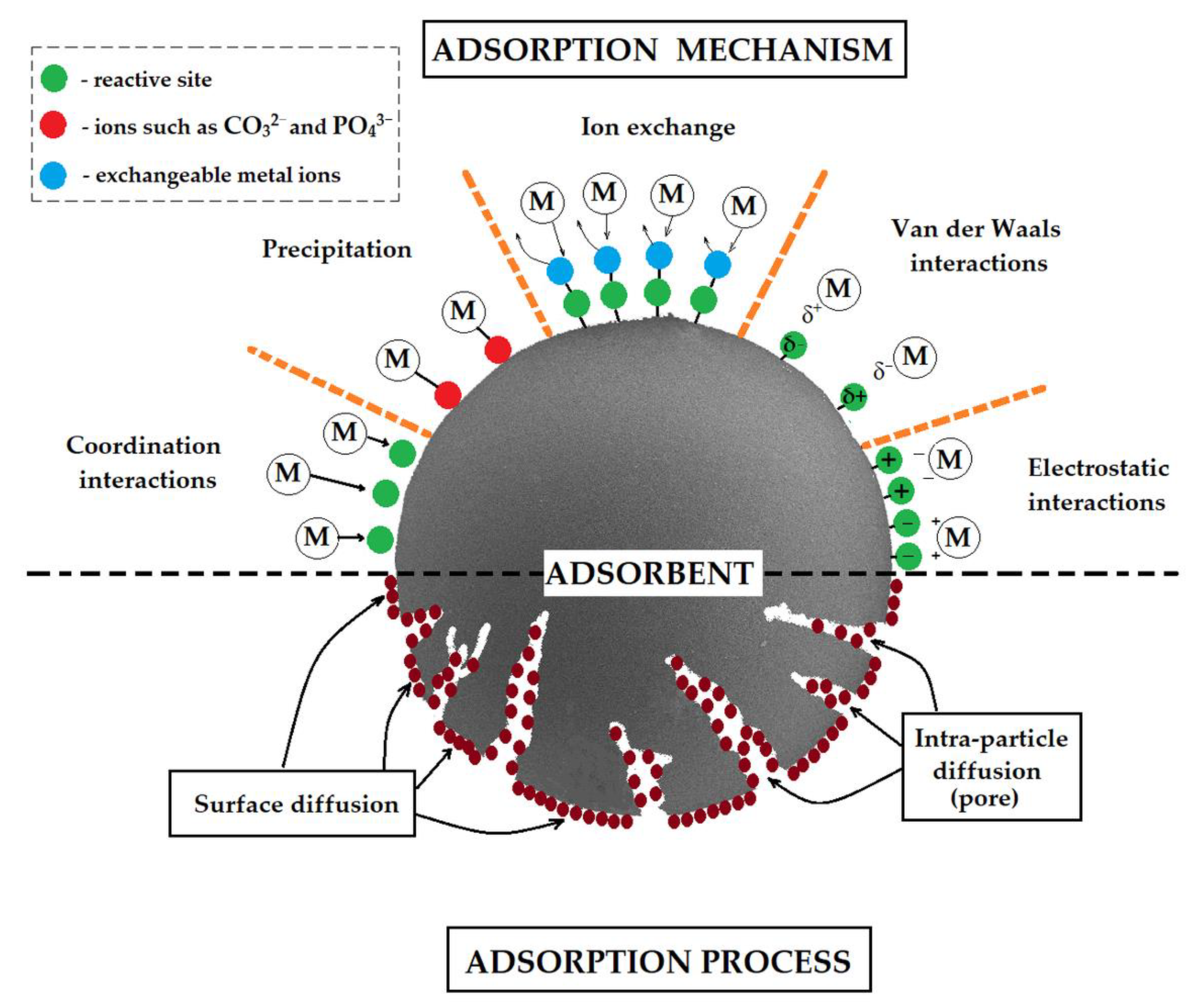
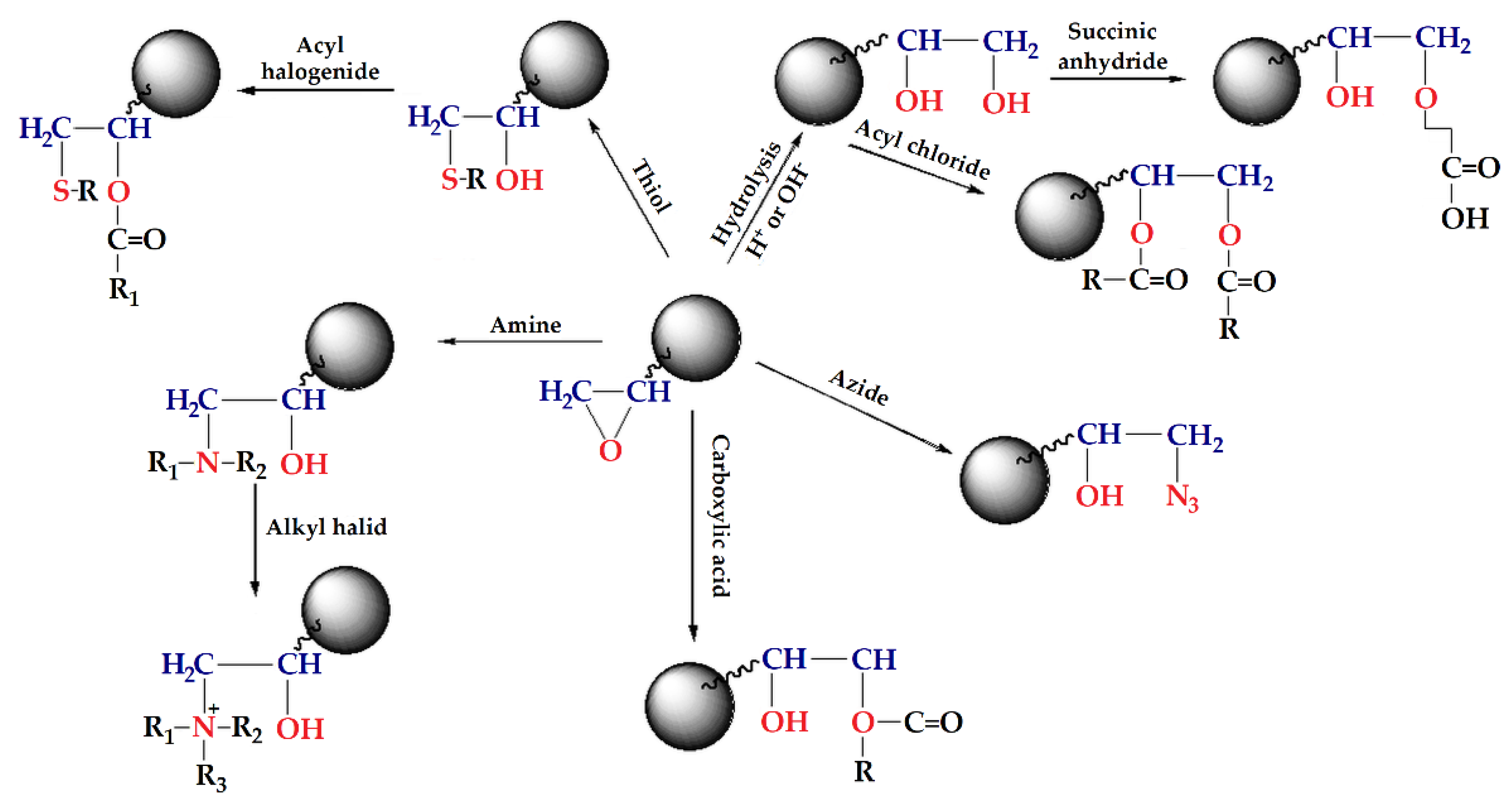
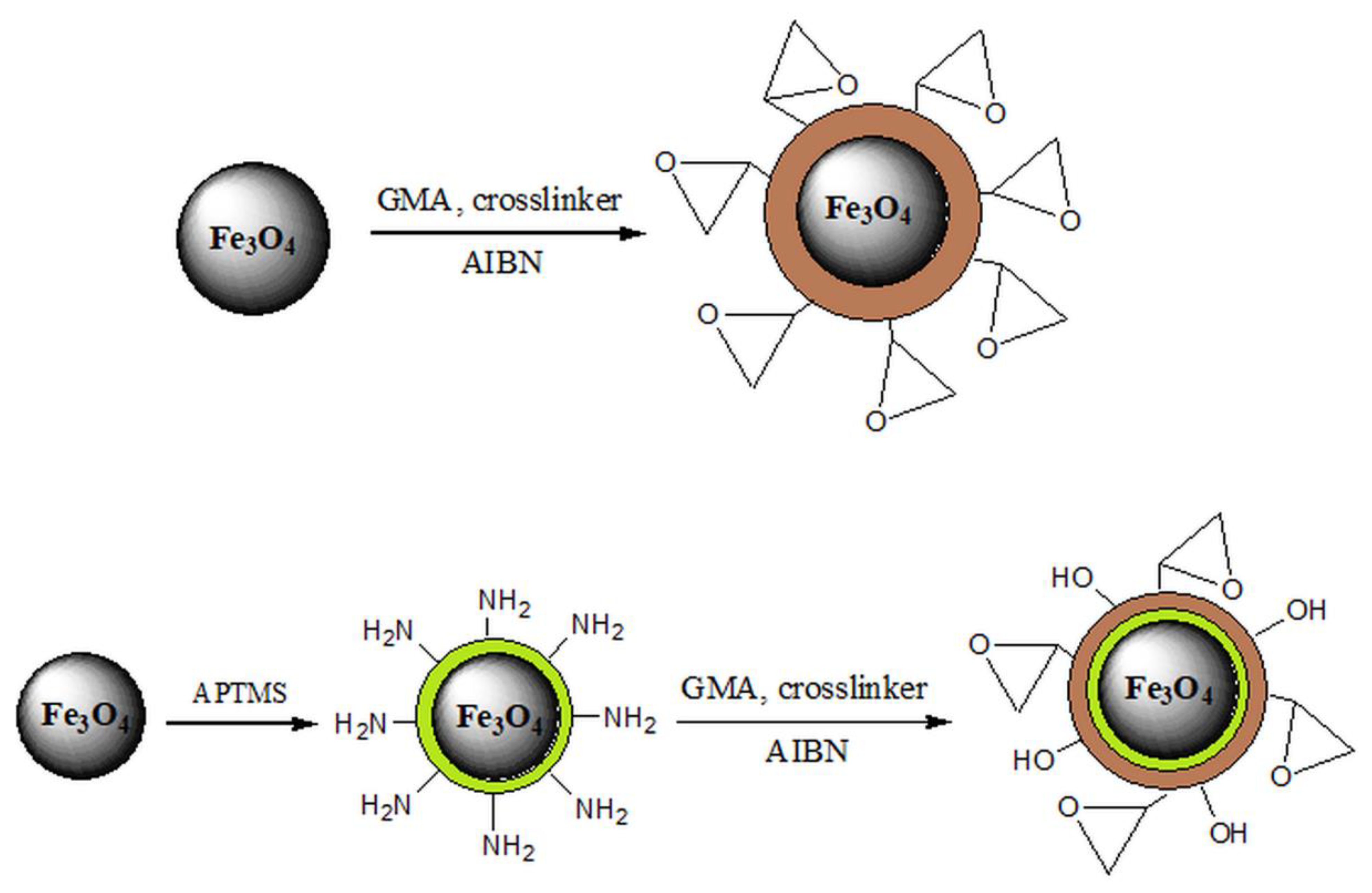
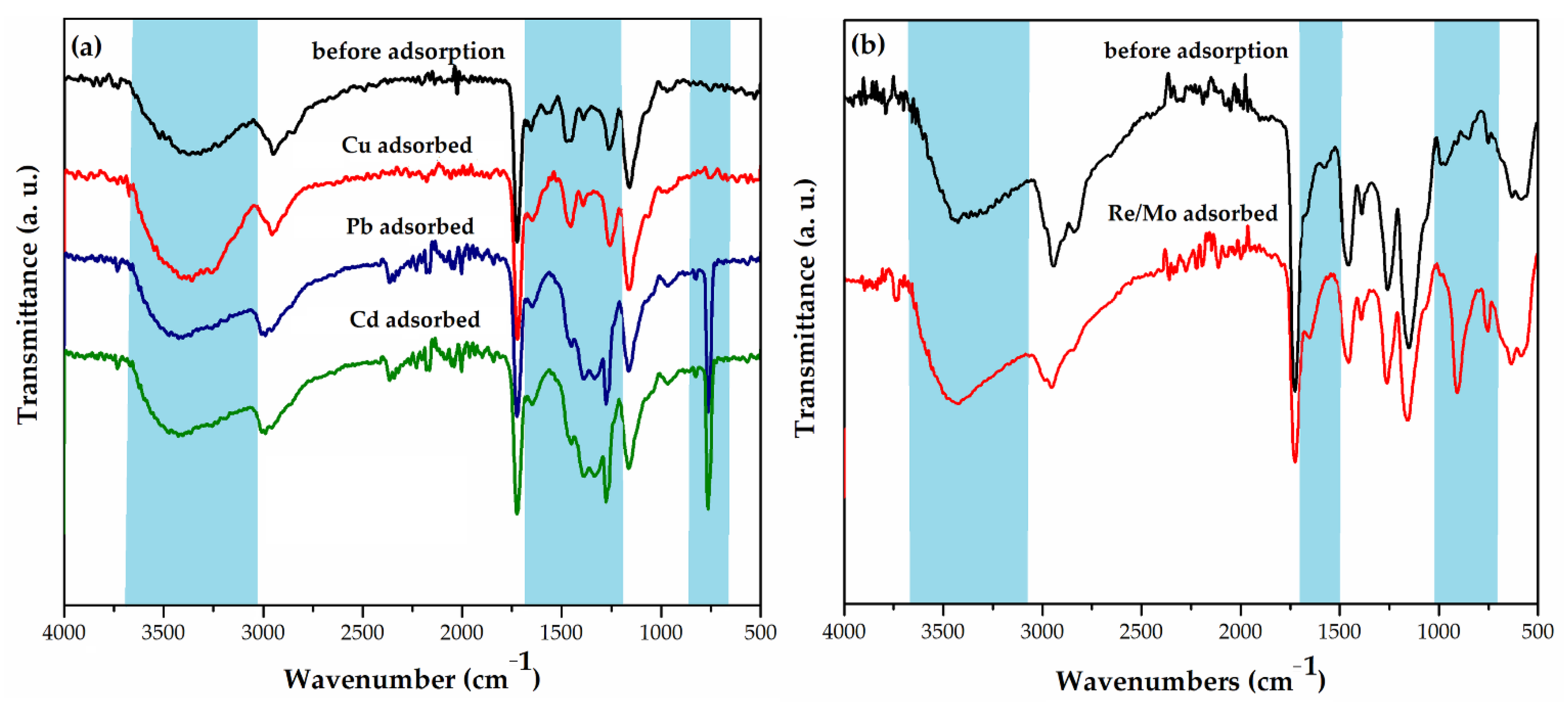
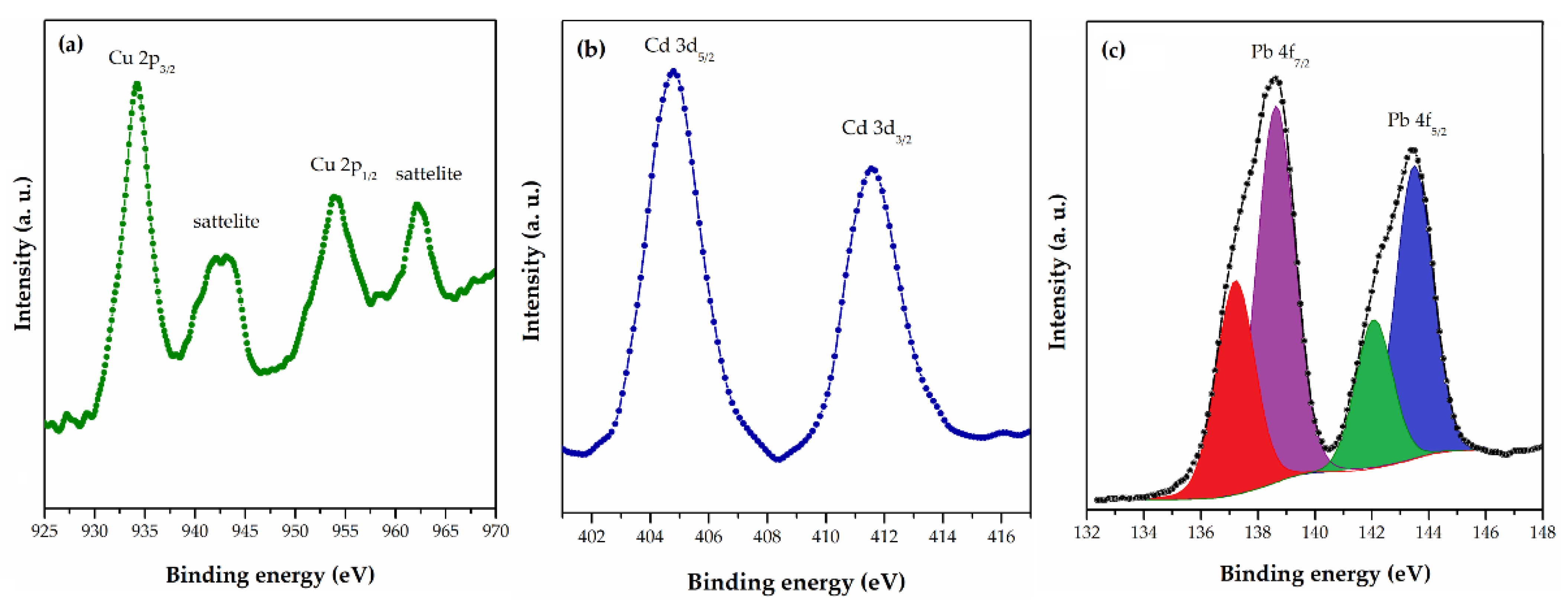
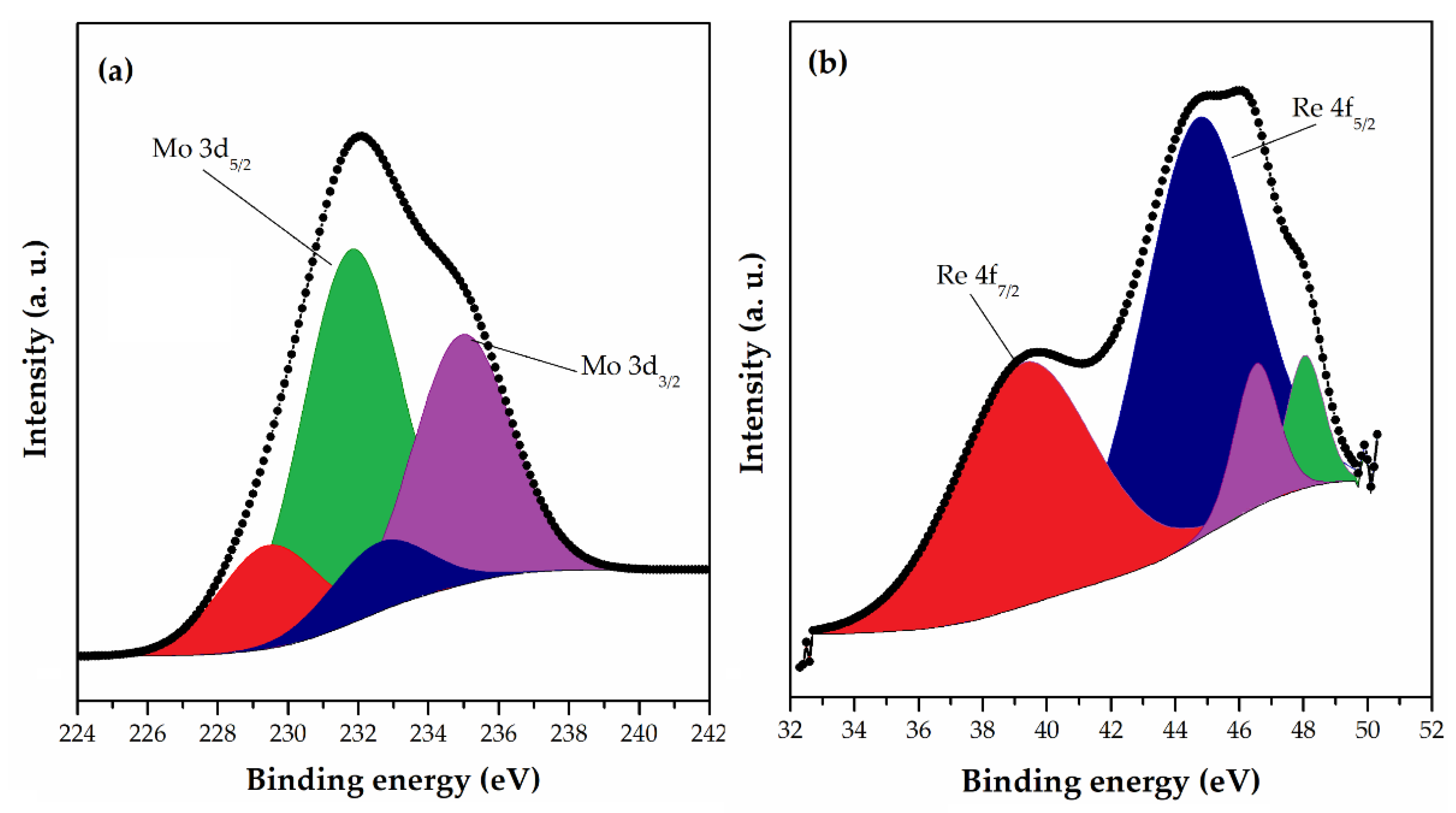
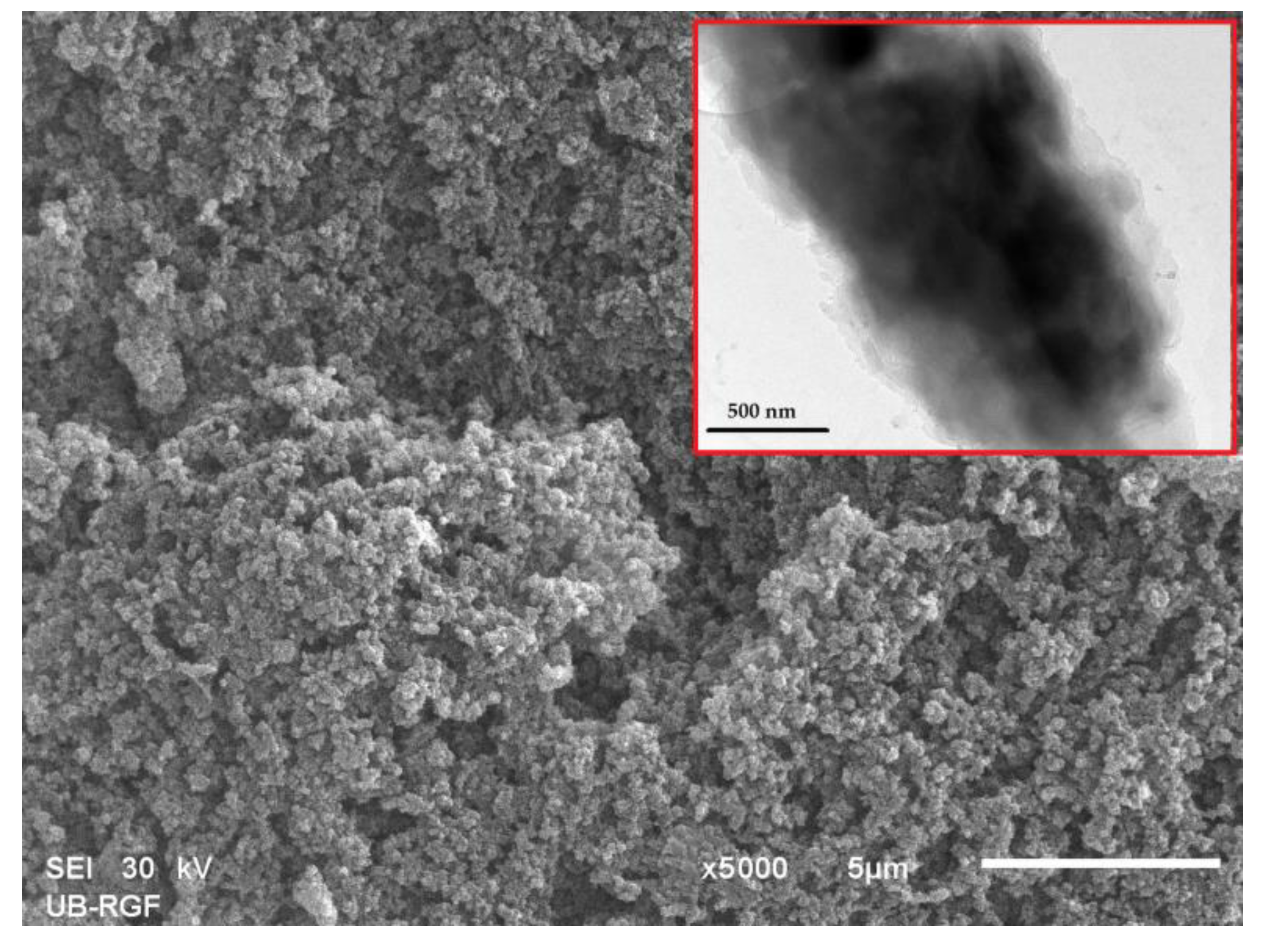
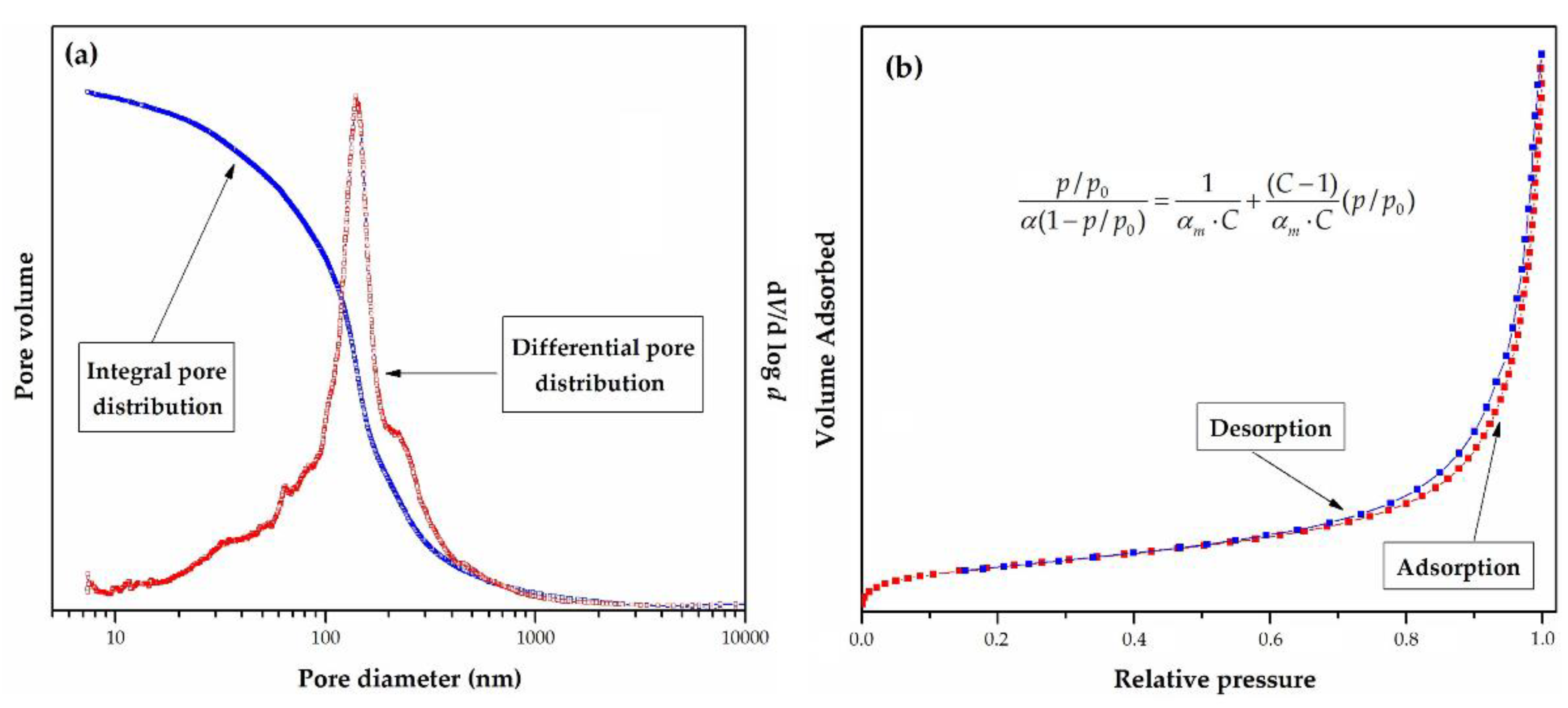
| Models | Non-Linear Form | Linear Form | Parameters |
|---|---|---|---|
| Langmuir | qmax—maximum monolayer coverage capacity, KL—Langmuir isotherm constant (binding energy of adsorption) | ||
| Freundlich | KF—Freundlich constant indicator of adsorption capacity, n—Freundlich constant related to adsorption intensity | ||
| Temkin | bT—Temkin isotherm constant related to the heat of adsorption, AT—Temkin isotherm equilibrium binding constant | ||
| Elovich | KE—Elovich equilibrium constant, qm—Elovich maximum adsorption capacity | ||
| Dubinin–Radushevich | qDR—Dubinin–Radushevich maximum adsorption capacity, ADR—constant representing mean adsorption energy | ||
| Halsey | KH—Halsey isotherm constant, nH—Halsey isotherm exponent | ||
| Harkin-Jura | AHJ—Harkins–Jura isotherm parameter, BHJ—Harkins–Jura isotherm constant | ||
| Jovanovic | KJ—Jovanovic isotherm constant, qJ,max—Jovanovic maximum adsorption capacity | ||
| Redlich–Peterson | KP—Redlich–Peterson model constant, αP—Redlich–Peterson model isotherm constant, g—Redlich–Peterson model exponent | ||
| Sips | KS—Sips isotherm model constant, m—Sips model exponent, qm,S—Sips maximum adsorption capacity | ||
| Toth | KT—Toth isotherm model constant, qm—Toth maximum adsorption capacity, t—Toth model exponent | ||
| Hill | KD—Hill isotherm model constant, qH—Hill maximum adsorption capacity, nH—Hill model exponent |
| Models | Non-Linear Form | Linear Form | Parameters |
|---|---|---|---|
| Pseudo-first-order | qe—adsorption capacity at equilibrium, k1—pseudo-first-order rate constant | ||
| Pseudo-second-order | qe—adsorption capacity at equilibrium, k2—pseudo-second-order rate constant | ||
| Elovich | α—initial adsorption rate, β—desorption constant | ||
| Avrami | kAV—Avrami fractional-order constant rat, n—Avrami fractional kinetic order | ||
| Fractional power | K—fractional power constant, v—fractional power rate constant | ||
| Intraparticle diffusion | kid—intraparticle diffusion rate constant, Cid—thickness of the adsorbent | ||
| Liquid film diffusion | F—fraction of solute adsorbed at any time t, kLFD –equilibrium fractional attainment | ||
| Bangham | kB—constant rate of Bangham model, α—constant (indicates the adsorption intensity) | ||
| Boyd | F < 0.85 F > 0.85 | F < 0.85 F > 0.85 | Bt—mathematical function of F |
| Adsorbents | Metals * | pH | Concentration | Adsorption Capacity | Reference |
|---|---|---|---|---|---|
| Poly(methyl methacrylate)/poly(ethyleneimine) core-shell nanoparticles | Cu(II) | 5 | 5 mg/L | 14 mg/g | [90] |
| Amidoximated acrylonitrile/methyl acrylate copolymer | Hg(II) | 2 | 0.25–5 mmol/L | 4.97 mmol/g | [91] |
| Poly(N-2-methyl-4-nitrophenyl maleimide-maleic anhydride-methyl methacrylate) terpolymers | Cd(II) | 7 | 0.2–100 mg/L | 77.56 mg/g | [92] |
| Boehmite/poly(methyl methacrylate) nanocomposites | Cu(II) | 4 | 10 mg/L | 9.43 mg/g | [93] |
| Poly(methyl methacrylate-2-hydroxyethyl methacrylate-ethylene glycol dimethacrylate) | Co(II) | 6 | 10–50 mg/L | 28.8 mg/g | [94] |
| Pb(II) | 31.4 mg/g | ||||
| Cu(II) | 31.2 mg/g | ||||
| Nano-magnetic poly(methyl methacrylate-glycidyl methacrylate-divinylbenzen)-ethylenediamine | Cu(II) | 6 | 100–300 mg/L | 87.72 mg/g | [95] |
| Cr(VI) | 2 | 50–1000 mg/L | 136.98 mg/g | ||
| Nano-magnetic poly(methyl methacrylate-glycidyl methacrylate-divinylbenzen)-diethylenetriamine | Cu(II) | 6 | 100–300 mg/L | 94.30 mg/g | [95] |
| Cr(VI) | 2 | 50–1000 mg/L | 149.25 mg/g | ||
| Nano-magnetic poly(methyl methacrylate-glycidyl methacrylate-divinylbenzen)-triethylenetetramine | Cu(II) | 6 | 100–300 mg/L | 92.60 mg/g | [95] |
| Cr(VI) | 2 | 50–1000 mg/L | 204.08 mg/g | ||
| Nano-magnetic poly(methyl methacrylate-glycidyl methacrylate-divinylbenzen)-tetraethylenepentamine | Cu(II) | 6 | 100–300 mg/L | 116.80 mg/g | [95] |
| Cr(VI) | 2 | 50–1000 mg/L | 370.37 mg/g | ||
| Poly(methyl methacrylate-co-ethyl acrylate) membrane | Cu(II) | 6 | 0.1–1.0 mmol/L | 8.20 mmol/L | [96] |
| Fe(III) | 2.51 mmol/L | ||||
| Poly(methyl methacrylate-co-buthyl methacrylate) membrane | Cu(II) | 6 | 0.1–1.0 mmol/L | 1.35 mmol/g | [96] |
| Fe(III) | 2.41 mmol/g | ||||
| Poly(methyl methacrylate-glycidyl methacrylate-ethylene glycol dimethacrylate)-1,9-nonanedithiol | Ag(I) | - | 10 mg/L | 21.7 mg/g | [97] |
| Poly(glycidyl methacrylate-co-ethylene glycol dimethacrylate)-ethylenediamine | Cu(II) | 5.5 | 0.05 mol/L | 1.10 mmol/g | [88] |
| Cd(II) | 5.5 | 0.67 mmol/g | |||
| Zn(II) | 2.1 | 0.25 mmol/g | |||
| Fe(II) | 1.25 | 0.14 mmol/g | |||
| Mn(II) | 1.25 | 0.12 mmol/g | |||
| Pb(II) | 1.25 | 1.06 mmol/g | |||
| Cr(III) | 1.25 | 0.47 mmol/g | |||
| Pt(IV) | 5.5 | 1.30 mmol/g | |||
| Magnetic poly(glycidyl methacrylate/divinylbenzene)-tetraethylenepentamine resin | Mo(VI) | 2 | 8 × 10−3 mol/L | 5.6 mmol/g | [98] |
| Magnetic poly(glycidyl methacrylate/N,N′-methylenebisacrylamide)-tetraethylenepentamine resin | Mo(VI) | 2 | 8 × 10−3 mol/L | 7.6 mmol/g | [98] |
| Poly(glycidyl methacrylate)-pyromellitic acid | Pb(II) | 2 | 100 mg/L | 206.71 mg/g | [99] |
| 2-Aminothiazole-functionalized poly(glycidyl methacrylate) microspheres | Au(III) | 4 | 200–700 mg/g | 440.84 mg/g | [59] |
| Poly(glycidyl methacrylate-co-trimethylolpropane trimethacrylate)-diethylenetriamine | Cu(II) | 5 | 0.4–4.0 mmol/L | 1.25 mmol/g | [100] |
| Co(II) | 0.54 mmol/g | ||||
| Ni(II) | 0.71 mmol/g | ||||
| Zn(II) | 0.69 mmol/g | ||||
| Cd(II) | 0.67 mmol/g | ||||
| Poly(glycidyl methacrylate) modified with trithiocyanuric acid microsphere | Ag(I) | 5 | 200–600 mg/L | 225.23 mg/g | [101] |
| Poly(glycidyl methacrylate–styrene–N,N′-methylenebisacrylamide) functionalized with –tetraethylenepentamine | Pb(II) | 4.6 | 4.83 mmol/L | 4.76 mmol/g | [102] |
| Hg(II) | 5.7 | 4.97 mmol/L | 4.80 mmol/g | ||
| Magnetic-poly(glycidyl methacrylate-N,N′-methylene bisacrylamide)-ethylenediamine | Th(IV) | 3.5 | 100 mg/L | 60 mg/g | [103] |
| Magnetic-poly(glycidyl methacrylate-N,N′-methylene bisacrylamide)-diethylenetriamine | Th(IV) | 3.5 | 100 mg/L | 84 mg/g | [103] |
| Magnetic-poly(glycidyl methacrylate-co-ethylene glycol dimethacrylate)-diethylenetriamine | V(V) | 5 | 1.36–146 mg/L | 11.23 mg/g | [104] |
| Macroporous poly(glycidyl methacrylate-co-ethylene glycol dimethacrylate)-ethylenediamine | Pt(IV) | 5.5 | 0.05 mol/L | 1.30 mmol/g | [61] |
| Cu(II) ion-imprinted poly(methacrylic acid/ethylene glycol dimethacrylate) | Cu(II) | 6 | 15 mg/L | 1058 µg/g | [105] |
| Poly(glycidyl methacrylate-ethyleneglycol dimethacrylate)-polyethylene imine | U(VI) | 6 | 25–500 mg/L | 71.4 mg/g | [106] |
| Poly(glycidyl methacrylate-ethyleneglycol dimethacrylate)-tris(2-aminoethyl) amine | U(VI) | 6 | 25–500 mg/L | 88.9 mg/g | [106] |
| As ion-imprinted poly(styrene/ethylene glycol dimethacrylate) | As | 6 | - | 482 µg/g | [107] |
| Se ion-imprinted poly(styrene/ethylene glycol dimethacrylate) | Se | 7 | - | 447 µg/g | [107] |
| Polyaminophosphonic acid-functionalized poly(glycidyl methacrylate) | Y(III) | 5 | 25–400 mg/L | 0.73 mmol/g | [64] |
| La(III) | 0.79 mmol/g | ||||
| Poly(methacrylic acid/ethylene glycol dimethacrylate) | Gd(III) | 6 | 5–200 mg/L | 19.4 mg/g | [108] |
| Poly(glycidyl methacrylate) functionalized with 2,6-diaminopyridine | Au(III) | 4 | - | 459.28 mg/g | [109] |
| Hypercrosslinked poly(styrene-glycidyl methacrylate-iminodiacetic acid) | Tb(III) | 5.8 | - | 145.6 mg/g | [110] |
| Poly(glycidyl methacrylate-co-ethylene glycol dimethacrylate)-diethylenetriamine | Mo(VI) | 2 | 0.1 mol/L | 3.58 mmol/g | [111] |
| Praseodymium ion imprinted Chloromethyl-8-hydroxyquinoline functinalized poly(Hydroxyethyl methylacrylate)/SiO2 | Pr(III) | 4.5 | 0.001–0.01 mol/L | 0.15 mmol/g | [112] |
| Ethanediamine-modified magnetic poly(glycidyl methacrylate) microspheres | Cd(II) | 6.5 | 0.178 mmol/L | 189.89mg/g | [113] |
| Fe3O4@polyglyceryl methacrylate-graft-triethylenetetramine-beta-cyclodextrin microspheres | Pb(II) | - | 50–200 mg/L | 229.41 mg/g | [114] |
| Cd(II) | 210.65 mg/g | ||||
| Polypropylene/poly(glycidyl methacrylate) | Sc(III) | 2 | 1–20 mg/L | 3.13 mg/g | [115] |
| Magnetic(glycidyl methacrylate-N,N′ -methylenebisacrylamide)- diethylenetriamine | Hg(II) | 4 | 5 mmol/L | 2.81 mmol/g | [53] |
| Magnetic-poly(glycidyl methacrylate-co-divinylbenzene)-tetraethylenepentamine | U(IV) | 4.5 | 0.525 mM | 1.68 mmol/g | [116] |
| Polyethylenimine/poly(glycidyl methacrylate) magnetic microspheres | Cr(VI) | 2 | 25–500 mg/L | 492.61 mg/g | [117] |
| Poly(glycidyl Methacrylate-co-ethylene glycol dimethacrylate)-diethylenetriamine | Pb(II) | 2 | 0.05 mol/L | 164 mg/g | [118] |
| Cu(II) | 4 | 120 mg/g | |||
| Cd(II) | 4 | 152 mg/g | |||
| Magnetic-poly(glycidyl methacrylate) | Hg(II) | - | 5–2500 mg/L | 543 mg/g | [119] |
| Magnetic-poly(methyl methacrylate-co-maleic anhydride) | Co(II) | 6 | 20–100 mg/L | 90.09 mg/g | [120] |
| Cr(III) | 90.91 mg/g | ||||
| Zn(II) | 109.89 mg/g | ||||
| Cd(II) | 111.11 mg/g |
Publisher’s Note: MDPI stays neutral with regard to jurisdictional claims in published maps and institutional affiliations. |
© 2022 by the authors. Licensee MDPI, Basel, Switzerland. This article is an open access article distributed under the terms and conditions of the Creative Commons Attribution (CC BY) license (https://creativecommons.org/licenses/by/4.0/).
Share and Cite
Nastasović, A.; Marković, B.; Suručić, L.; Onjia, A. Methacrylate-Based Polymeric Sorbents for Recovery of Metals from Aqueous Solutions. Metals 2022, 12, 814. https://doi.org/10.3390/met12050814
Nastasović A, Marković B, Suručić L, Onjia A. Methacrylate-Based Polymeric Sorbents for Recovery of Metals from Aqueous Solutions. Metals. 2022; 12(5):814. https://doi.org/10.3390/met12050814
Chicago/Turabian StyleNastasović, Aleksandra, Bojana Marković, Ljiljana Suručić, and Antonije Onjia. 2022. "Methacrylate-Based Polymeric Sorbents for Recovery of Metals from Aqueous Solutions" Metals 12, no. 5: 814. https://doi.org/10.3390/met12050814
APA StyleNastasović, A., Marković, B., Suručić, L., & Onjia, A. (2022). Methacrylate-Based Polymeric Sorbents for Recovery of Metals from Aqueous Solutions. Metals, 12(5), 814. https://doi.org/10.3390/met12050814









